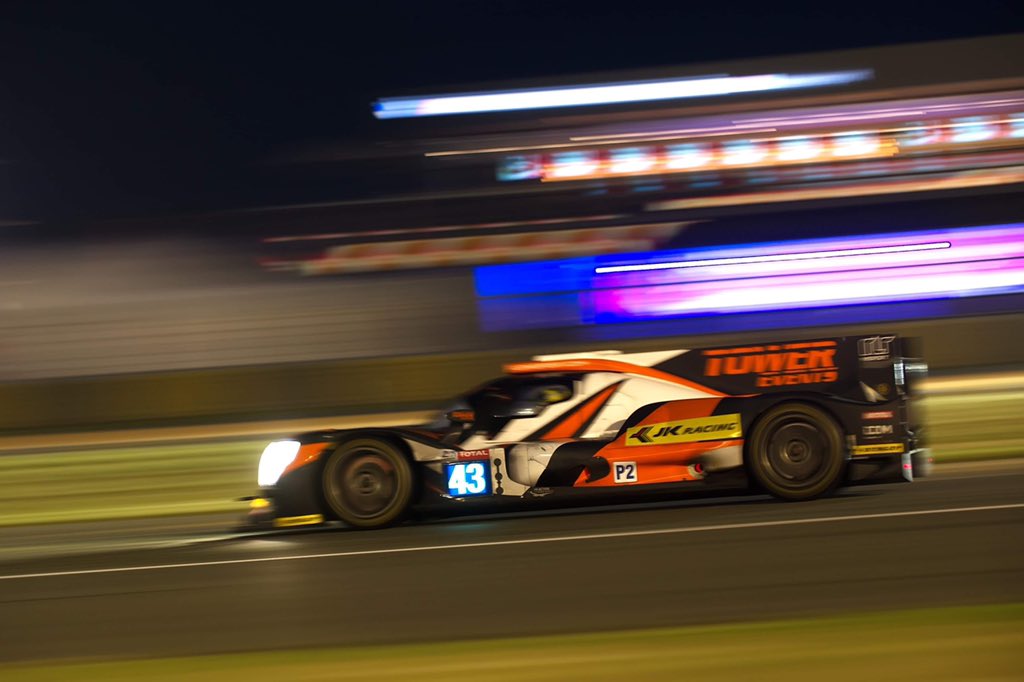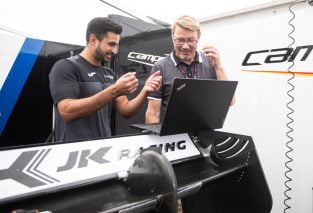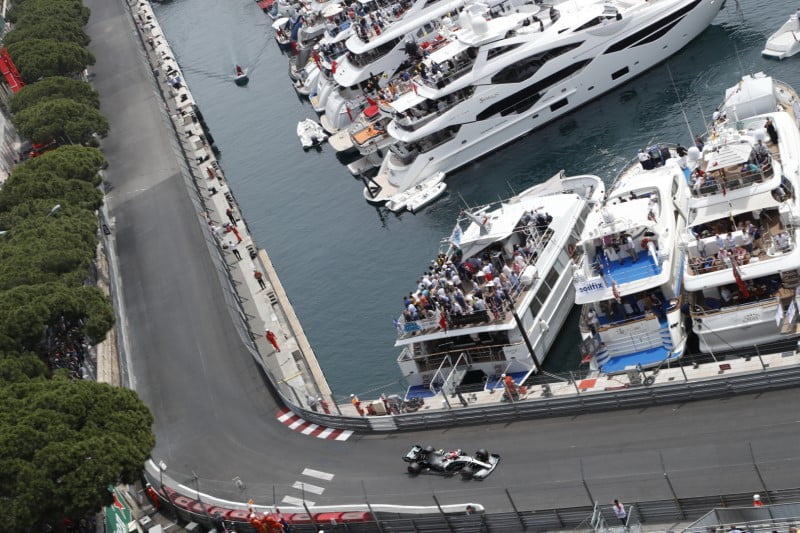Indian racer Arjun Maini explains the difference between LMP2 and F2 as he gears up for his F2 comeback at Austria and Silverstone.
LMP2 v. F2 – Key Difference
In 2018, Arjun raced in F2, where most races concluded in around 60 mins. However, at the 24 Hours of Le Mans, Arjun’s longest stint lasted a little over 2.5 hours. How different is the LMP2 class from F2?
Explains Arjun, “Honestly, the difference isn’t too big because LMP2 cars also have a lot of down-force. The key difference though is that in LMP2 you are pushing flat out every lap whereas in F2 you do end up saving and managing your tyres. Also at Le Mans, you have to deal with 3 other racing categories — faster and slower ones, so managing traffic is one of the biggest challenges in LMP2. But in terms of physical exertion, F2 is definitely more.”
I have known Arjun Maini for nearly a decade — from his days of karting to his progression up the ranks of single-seater racing and now, as he pursues an off-beat approach to becoming a Formula 1 racer. A few weekends ago, Arjun competed in his first-ever 24 Hours of Le Mans — a race that the National Geographic has labelled as the ‘World’s Greatest Sporting’ event. In the world of Motorsport, this race is one of the three coveted crowns that make up the Triple Crown of Motorsport.
The challenges posed by Le Mans are not just physical, but mental. Drivers must brave exhaustion, sleep deprivation, changing light conditions and nightfall, while racing with complete focus. This year’s Le Mans saw 61 teams enter with 3 drivers each — requiring drivers to manage traffic while racing among faster and slower cars across different classes, which further adds to the challenge.
Brilliant. There’s so much more to look forward to in Austria already. Welcome back to single-seaters, @ArjunMaini https://t.co/gLQqFDhANF
— Kunal Shah (@kunalashah) June 25, 2019
Third Indian – 24 Hours of Le Mans
As the third Indian ever to race the Le Mans, Arjun’s participation induced immense excitement among Indian Motorsport fans; many of whom were annoyed that the race wasn’t broadcast in India. In a bid to prepare for his first Le Mans attempt, Arjun had shifted from racing Formula 2 to the European Le Mans Series (ELMS) in 2019. However, the eventual results were not what he or his fans would have hoped for — at the end of the 24 hours, Arjun’s team finished nearly 70 laps off the winning team in the LMP2 class. Their race was impacted by suspension issues and closer to the end, the engine gave up leading to their team being ‘not classified’ as finishers.
Even so, the legend of Le Mans is as much about the journey, as the outcome. This experience will definitely add to Arjun’s stature as a racing car driver, and the mental learning will especially be invaluable. In this exclusive interview with Firstpost, Arjun shares his thoughts from his debut experience at Le Mans.
Qualifying & Race
Arjun’s team (RLR M Sport / Tower Events), racing in the LMP2 category, managed to qualify 16th in their category (24th overall). Shares Arjun, “Qualifying was crazy because everyone is on track at the same time and across all categories. I wasn’t lucky enough to get even one clear lap in qualifying and that’s a bit of a shame because from our race pace one could see that we were actually quicker. It was unfortunate that lost out mainly due to run-ins with traffic.”
This qualifying outcome put Arjun and his team in a challenging position for the race, but they still managed to put their best foot forward. He reveals, “But starting from the near-back of the LMP2 field actually made the race a bit more fun — we fought hard with some of our competitors for (track) position. In fact, everything about the race was special, but one of my highlights was my first recovery stint where I fought and passed several LMP2 cars — it was actually awesome.”
Biggest learnings from Le Mans
“After this year’s experience, I would love to race at Le Mans every year until retirement. Even if I made it to Formula 1, I would still like to race at Le Mans — that’s how much this race means to me.”
“In terms of learning, I think it was the smaller things that caught me out — like slow zones and Full Course Yellow restarts. I think I could have managed my tyre and brake temperatures better to get back up to racing speeds after the restart. Honestly, those were probably the biggest opportunities to gain track position,” confessed Arjun.
Enduring a 24-hour race
Some of the most interesting stories about the 24 Hours of Le Mans revolve around racing at night, the long stints behind the wheel, the ‘golden hour’ and how drivers and team personnel manage their sleep cycles over the entire race duration. Arjun enjoyed the night driving experience, saying, “It was crazy fun — also my first time of racing in the night experience with headlights!” He also outlined his main difference between day-time and night racing — the driver’s vision is limited, so everything passes by quicker initially.
Contrary to common intuition, Arjun’s Le Mans run was not fuelled by coffee. He shares, “I am a big coffee drinker, but for Le Mans, I stayed away from coffee. It was tough, but I just focussed on hydrating myself with water and electrolytes.”
Another question that most Le Mans viewers have is whether the drivers manage to sleep at all — and how they manage to perform at top racing capacity even without regular sleep. Reveals Arjun, “During the race, I slept twice in total — once after my second stint at about 2 am for an hour and then after my third stint at 7 am for two hours.” Three hours of sleep in a gruelling race that lasted for 24 hours — did this require any special preparations? He elaborates, “In the off-season, just to see what it would feel like, I stayed awake the whole night and went karting the next day. To be honest, I learnt that the adrenaline kicks in and keeps you going. That’s what happened at Le Mans too. It’s not a massive physical challenge but more a mental one — to keep yourself sharp for so many hours.”
What’s next for Arjun?
In the days leading up to the 24 Hours of Le Mans, the governing body announced their ‘hypercar’ regulations from 2021. Is racing in the coveted LMP1 category one of Arjun’s goals? The answer is an emphatic yes, as he shares, “I would love to race in LMP1 or in the ‘hypercars’ when they arrive in the future. All I can do is display my potential and professionalism and see where it takes me. For the rest of 2019, I am happy with my ELMS program, but I am open to more WEC (World Endurance Championship) drives.” But is there an opportunity to race single-seater too, in 2019? “There is going to be an announcement coming soon but it’s a secret for now,” signs off Arjun.
Shortly after this interview, Arjun announced his comeback to F2 for the next two rounds in Austria and Silverstone. He will race with Campos Racing, currently 4th in the standings. It will be a double delight for Indian Motorsport fans as Jehan Daruvala will line up on the F3 grid, while Arjun will do so in F2.
This post was first published on Firstpost














